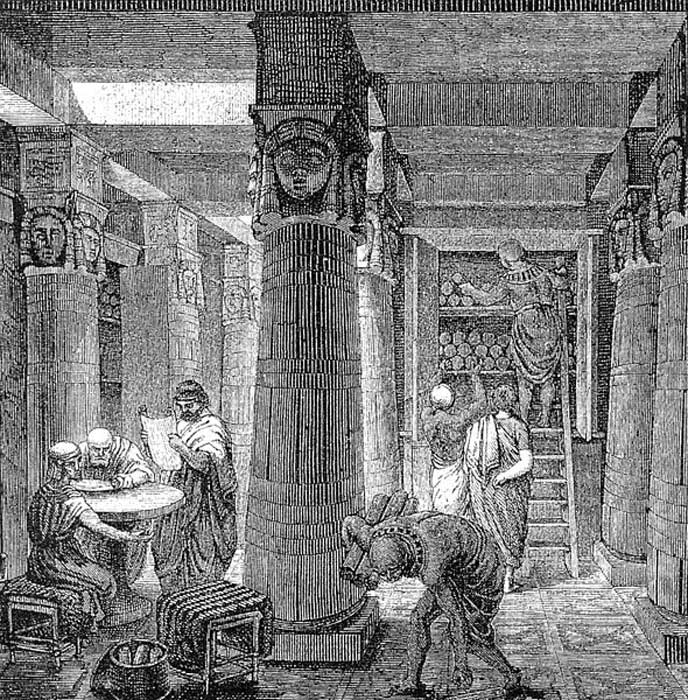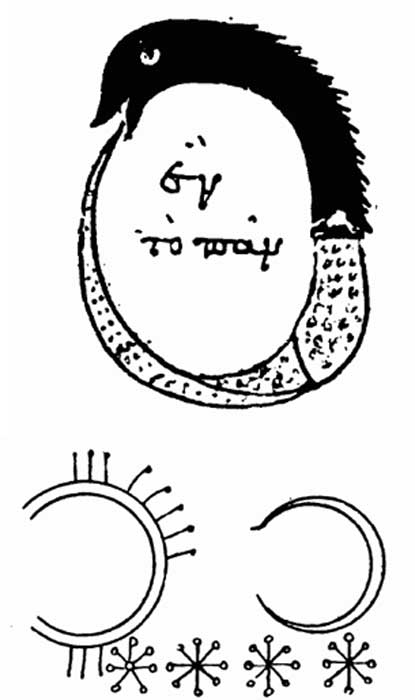
The Forgotten Cleopatra: Searching for Cleopatra the Alchemist and Her Golden Secret
Cleopatra was one of four female alchemists who worked on producing the famous Philosopher's stone. She lived during the last remarkable period in Alexandria’s history, when it was still a city of open-minded scientists. Some of the most precious of her discoveries are included in her Chrysopoeia, which may even hold the key for a transmutation into gold.
Alchemy was an elite discipline forbidden to many in ancient Egypt. The mystical knowledge and advanced skills necessary for its practice demanded extensive education and unique abilities. However, the difference between Egypt and many other places on Earth was immense. Women who lived near the Nile were allowed to practice science and were highly appreciated for their successes. There was no discrimination among scientists in some circles, especially in Alexandria. This situation helped women to flourish in science.

‘The Great Library of Alexandria.’ (Public Domain)
The history of alchemy is full of blank spaces which may never be filled. Moreover, many of the ancient discoveries were masked by later scientists or researchers, who are remembered for giving the world something that was actually known centuries or even millennia before they “discovered” it. However, some of the remarkable achievements by ancient people are still known and shed light on the mysterious chambers full of tools and scrolls, where ancient alchemists tested their ideas.
- Making a Magical Substance for Health and Wealth - Discovery of Alchemy Transcripts by Newton
- Mystical Science of Alchemy Arose Independently in Ancient Egypt, China, India
- Alchemy and Immortality – The Tale of Nicolas Flammel and the Lapis Philosophorum
Was She Also Cleopatra the Physician?
Usually Cleopatra the Alchemist is remembered as a woman who may have had Greek roots and lived in Alexandria during the 3rd century AD, where she worked as a philosopher and author. Her experiments with practical alchemy are mostly famous for providing one of the four attempts by female alchemists to produce the famous Philosopher's stone. She is also known to have created a very early chemical tool called the alembic.

Picture of an alembic from a medieval manuscript. (Public Domain)
Some researchers suggest that Cleopatra the Alchemist and Cleopatra the Physician could be the same woman. There are also some skeptical voices that negate commonly accepted information about her as well. One writer who has tried to solve the problem of this mysterious woman was Marilyn Ogilvie, who wrote:
''Many different accounts surround the person known as Cleopatra. According to one tradition, she was a physician who was mentioned in the Hippocratic writings; according to a second, she was an alchemist who was a follower of Mary the Jewess. During the Middle Ages the traditions became confused, and a third complication was added: the name of Queen Cleopatra of Egypt was linked with the work of both Cleopatra the Physician and Cleopatra the Alchemist. Although both historians of medicine and historians of alchemy refer to the same ancient sources, their interpretations of these sources depend upon their biases—whether they are searching for a physician or an alchemist. The only connection between the interests of Cleopatra the Alchemist and Cleopatra the Physician is in their mutual concern with the reproductive process. In the reports of the work of Cleopatra the Physician, no more than one ingredient of science, the descriptive element, is apparent. As for Cleopatra the Alchemist, although no evidence suggests an originality of approach, she does seem to have integrated the theoretical aspects of alchemy with laboratory experimentation.''

Imaginative depiction of Cleopatra the Alchemist from Mylius' 1618 Basilica philosophica "Seals of the Philosophers". (Public Domain)
Could She Make Silver and Gold?
In Hellenistic Egypt, Cleopatra could already find many exciting resources that were tucked away on the bookshelves of the great Library. There was also a strong scientific circle that researched many fascinating subjects, including the most mysterious ones related to chemistry and physics.
Many details of her life are unknown, but it is suspected that she was connected to the school of Mary the Jewess and Comarius, the famous alchemists. Their greatest achievements were creating the sophisticated apparatus for sublimation and distillation. It seems that Cleopatra died in the 4th century AD, but details surrounding her death remain unknown.

The Chrysopoeia of Mary the Jewess, 1964, by Lenora Carrington. (CC BY NC 2.0)
Only three works by this remarkable woman have survived until now: Διαλογος φιλοσοφων και κλεοπατρας (A Dialogue of Cleopatra and the Philosophers), Εκ των Κλεοπατρας περι μετρων και σταθμων. (On Weights and Measures), and the most famous Κλεοπατρης χρυσοποια (Chrysopoeia of Cleopatra).
Chrysopoeia is a sheet of papyrus with the description of her most remarkable research. A copy of the papyrus is located in Leiden University, Netherlands. The word Chrysopoeia can be translated as ''gold-making''. The papyrus is full of symbols and drawings that have been described in a very simple way.
- From Magic to Science: The Intriguing Ritual and Powerful Work of Alchemy
- The Legendary Emerald Tablet
- Homunculus: The Alchemical Creation of Little People with Great Powers
One of the images shows a serpent eating its tail. It was the symbol of eternal return, a very popular depiction in antiquity. There is also an instrument similar to the well-known chemical apparatus called kerotakis. Finally, there is a symbol of a star and crescent – signifying turning lead into silver. Does this mean that Cleopatra was successful in her attempts to transform metals? Did she make silver? Or perhaps even gold? The answers remain unknown.

Symbols of a snake eating its tail (Public Domain) and a crescent moon with stars (Public Domain) from the Chrysopoeia of Cleopatra.
The Shadow of the Ancient Scientist
Apart from Cleopatra the Alchemist, several other names are known as great scientists from her time. One of them was another woman, called Paphnutia the Virgin. She is known from a letter between the alchemists Theosebeia and her brother Zosimos of Panopolis. In this text, Zosimos criticizes his sister for sharing ideas with Paphnutia. In his opinion, Paphnutia's education was limited, and her practice of alchemy wasn't valuable. However, today’s chemists could be called descendants of these people, including the mysterious Cleopatra the Alchemist.
Top Image: ‘Gone, but not Forgotten.’ (1873) By John William Waterhouse. Source: Public Domain
References:
Jack Lindsay, The Origins of Alchemy in Graeco-Roman Egypt, 1970.
Jan Apotheker, Livia Simon Sarkadi, European Women in Chemistry, 2011.
Marelene Rayner-Canham, Women in Chemistry: Their Changing Roles from Alchemical Times to the Mid-Twentieth Century, 2001.
Stanton J. Linden. The alchemy reader: from Hermes Trismegistus to Isaac Newton. 2003
Marilyn Ogilvie, The Biographical Dictionary of Women in Science, 2014.















Comments
Can be seen the alembic was used for metal alloy experimentation, using High heat ! What works mixes with what. Also chemicals too. To make paint, ink, perfume, perhaps dye too, etc. Where is her tomb ?? I bet many things are with her in the ground/back then they would take the things with them they cherished, that made their life prosper. She is somewhere ! :)